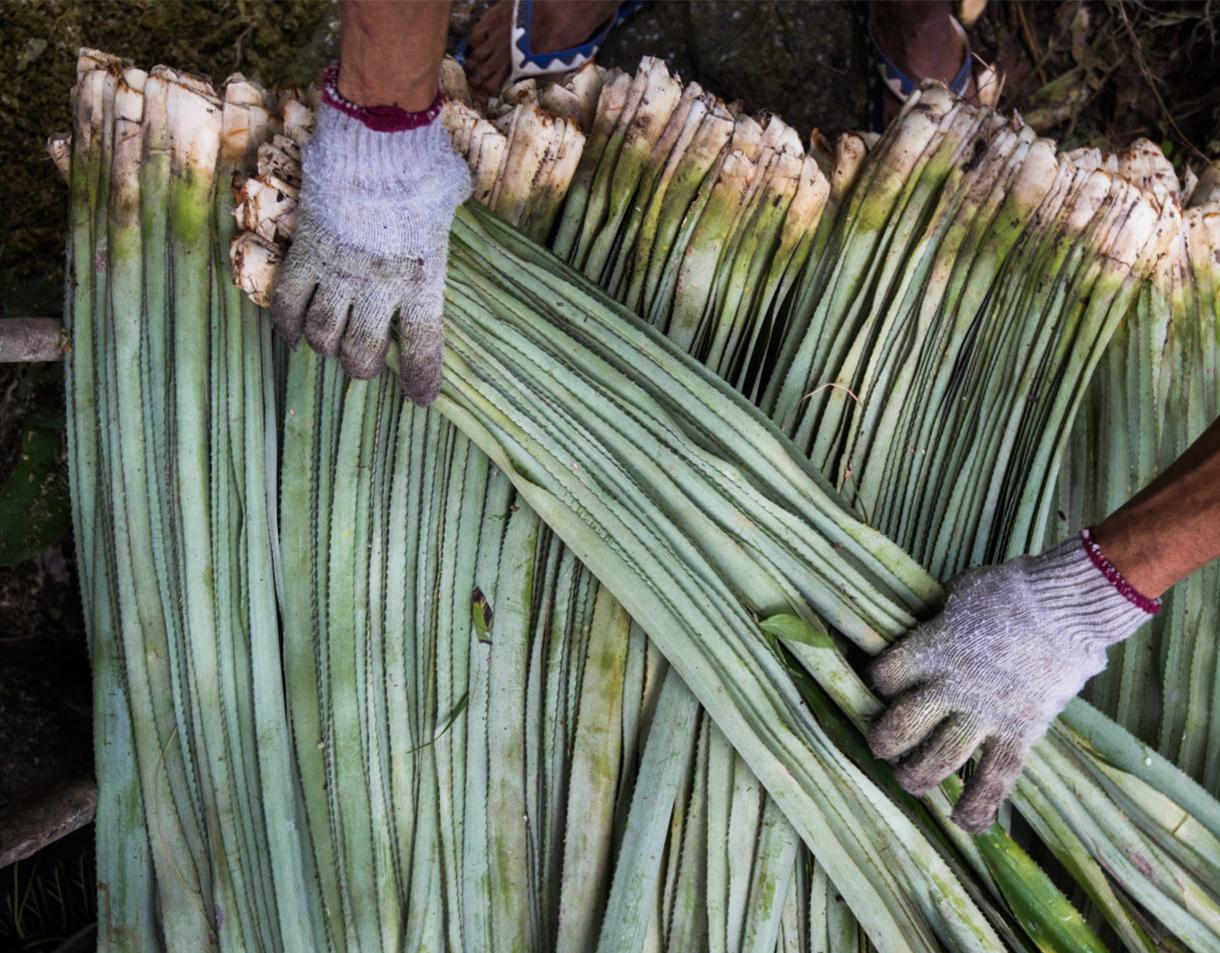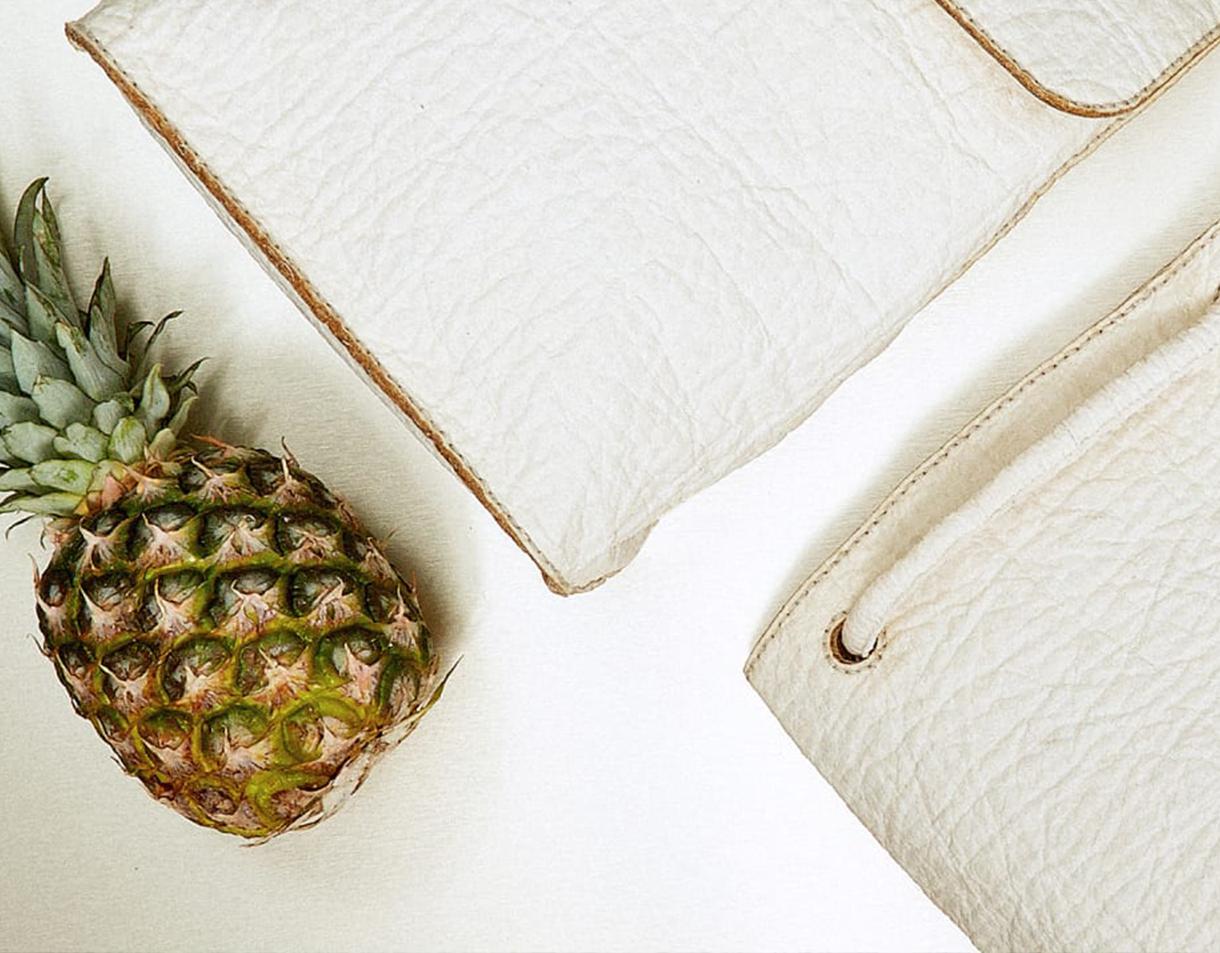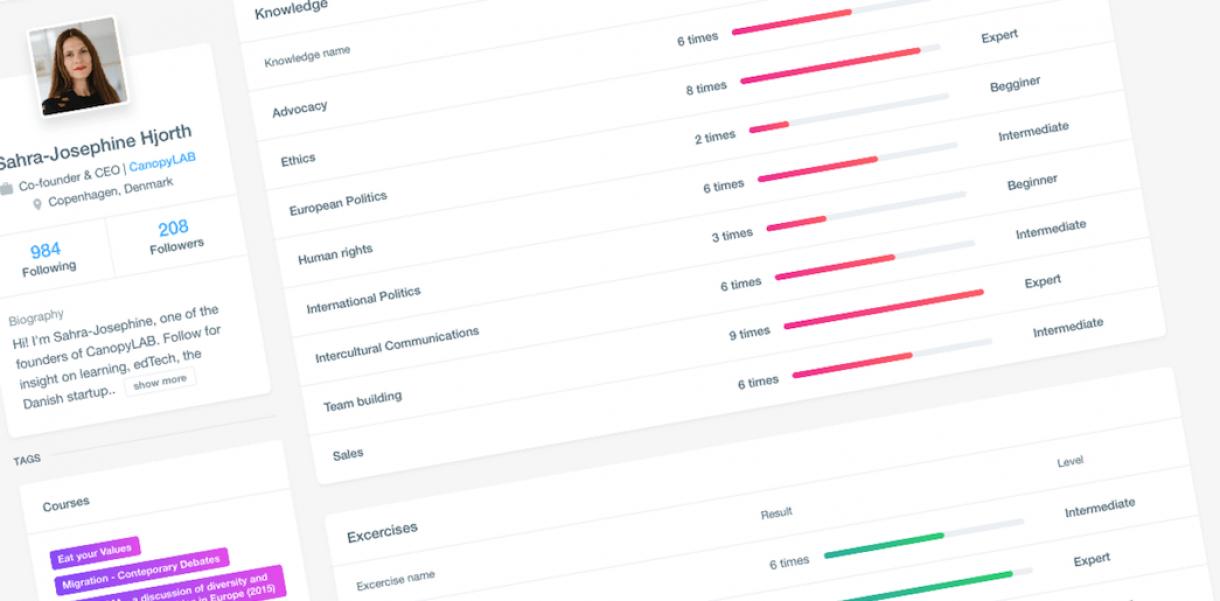More and more, designers are turning to fruits and vegetables for sustainable material alternatives. But while many of these products are greener, few have been able to make it mainstream and scale their impact. Gone are the days of comparing apples and oranges; now, it's the age of the pineapple. And Piñatex, a material made out of pineapple leaf fibres, has caught the eye of some of the world's most iconic fashion labels, including Hugo Boss, Chanel and H&M.
We had a chat with Dr Carmen Hijosa, the inventor behind Piñatex and Founder of mother company Ananas Anam.
In a nutshell, what does Ananas Anam do?
"Our main vision is to make a material that takes both people and the earth into account. That's what Piñatex is all about, and that's what Ananas Anam does; brings a new material into the world. Our mission in transparency: we want all stakeholders to be engaged and a part of our journey from the pineapple farms to the final product. This is why we ourselves manufacture, market and ship the product all over the world."
How did it all come to life?
"In the 90s I was working in Ireland with my own company, which manufactured leather goods, selling in the top price range. As a result, I got some consultancy work, where I went to Bolivia, Thailand, Bangladesh and then the Philippines to upgrade products made with leather.
On the trip, I started to realise that a product is about people. It's about asking where the material comes from, which was really striking to me since sustainability wasn't really a buzzword back then. I visited tanneries to see how the leather was made, and this exposed me to the negative impacts leather has on the planet and the people. I turned to the Philippine Design Centre, where I was working at the time, and said: 'You must look into your own resources. You've got good natural fibres and good skills which is what we should focus on'.
I became very connected to the people, their crafts and their skills using natural and indigenous fibres. In particular, pineapple leaf fibres caught my attention as they are very strong, fine and flexible. This gave me the idea: what if I can make a mesh, not unlike leather? Years later, I had Piñatex."
"I visited tanneries to see how the leather was made and this exposed me to the negative impacts leather has on the planet and the people."
A seven-year-long development – what was that process like?
"The first few years, I tried to find someone who could help me make the material. It's very hard for people to understand an idea when they don't have the material in front of them. I then decided to come to London to do a PhD at the Royal College of Art in Design. Five years later, people fully understood what I was trying to do. Ananas Anam launched in 2014 and was selling Piñatex by 2016. Now that Piñatex on the market, people connect with it and recognise that it's an important material."
What's the status quo?
"Today, we are 14 people in London and 14 in the Philippines. We've got a subsidiary in the Philippines, one in Spain and now we've got a CEO, who runs the company. My role is bringing the intangible into something tangible while upholding the original vision. The vision is embedded in everything that we do, and that is one of our greatest assets."
What's the impact you've seen so far?
"We're making a difference to some of the poorest farming communities. We work with several pineapple cooperatives in the Philippines, of which the largest employs 700 families. When it comes to the ecological impact, we don't need to plant any pineapples. Instead, we make use of the 13 million tonnes of leaves left after the pineapple harvest. As a result, we don't use any extra land, water or pesticides to get Piñatex natural fibres."
What has been the biggest challenge along the way?
"Challenges change along the way. Right now, it's the upscaling of our supply chain; it's a unique but also complex supply chain. Some of our funding we will use to buy and develop better machines to extract the fibres; we then lend them, rent-free, to the pineapple farming communities."
"I became very connected to the people, their crafts and their skills using natural and indigenous fibres."
You've worked with some big global fashion brands, what's your take on their impact?
"These kinds of collaborations are really important in enabling us to reach another level of scale and market positioning. This shows that these larger companies and designers are also trying to do something for the better. I think a lot of big companies are trying, but they must move slowly because it's difficult for them to clean up a whole supply chain. I think we're going in the right direction even though there's still a long way to go. The people we've worked with definitely believe in taking this route."
What are the next steps for Ananas Anam?
"The next step is the upscaling stage. We want to bring Piñatex into more widespread, high street markets and not just the top-level brands. Piñatex currently sits in the mid to high pricepoint range but, as we develop our supply chain, we will be able to provide a product that's cheaper. As of now, we're a B2B company. In the next couple of years, we will develop an accessories collection which will allow us to bring our message directly to the end consumer. We are expanding our reach into markets beyond fashion, including interiors and the automotive industry. Our ongoing R&D is vital in developing the right products for these new markets, all of which takes time and care. There's a huge demand, which we need to be ready for."







